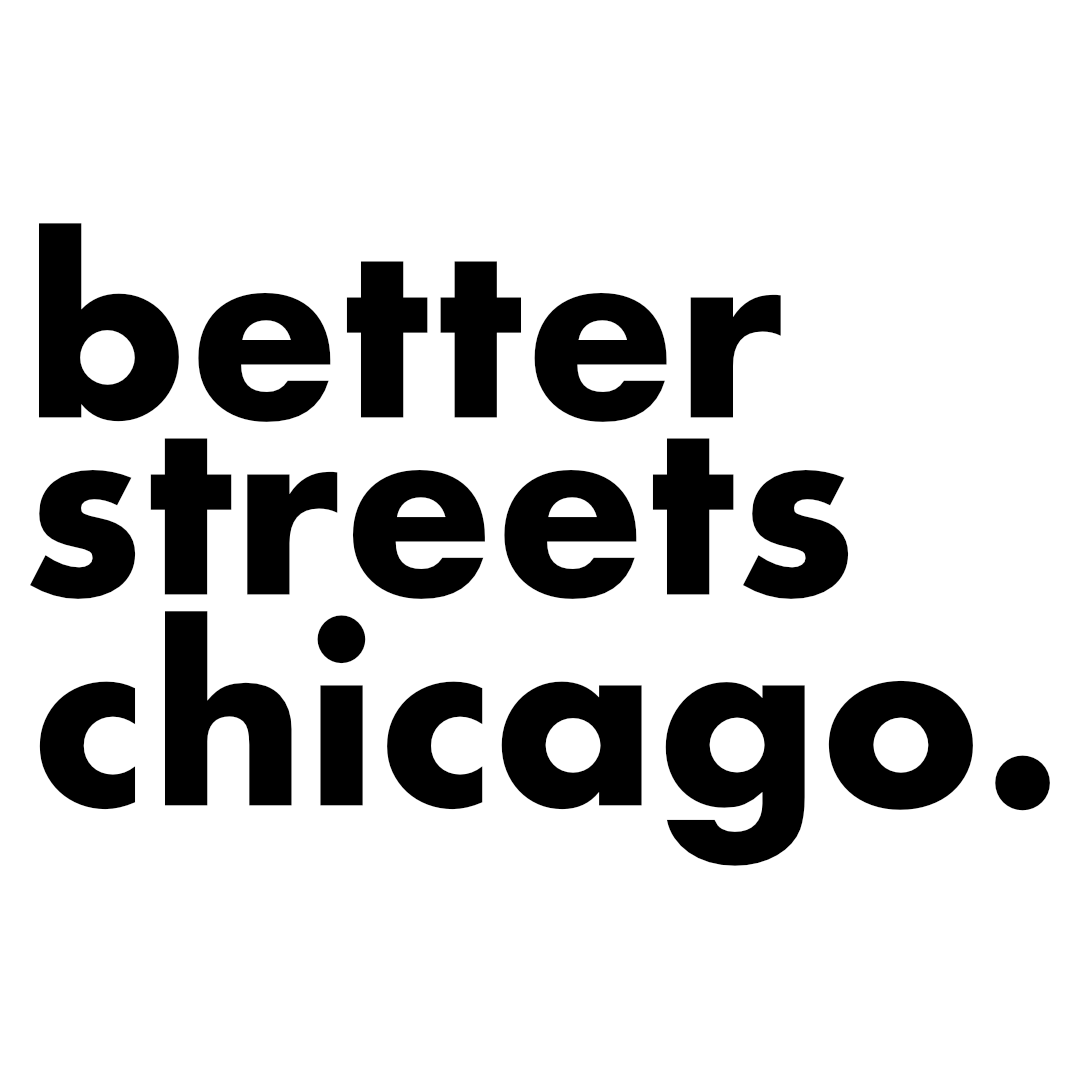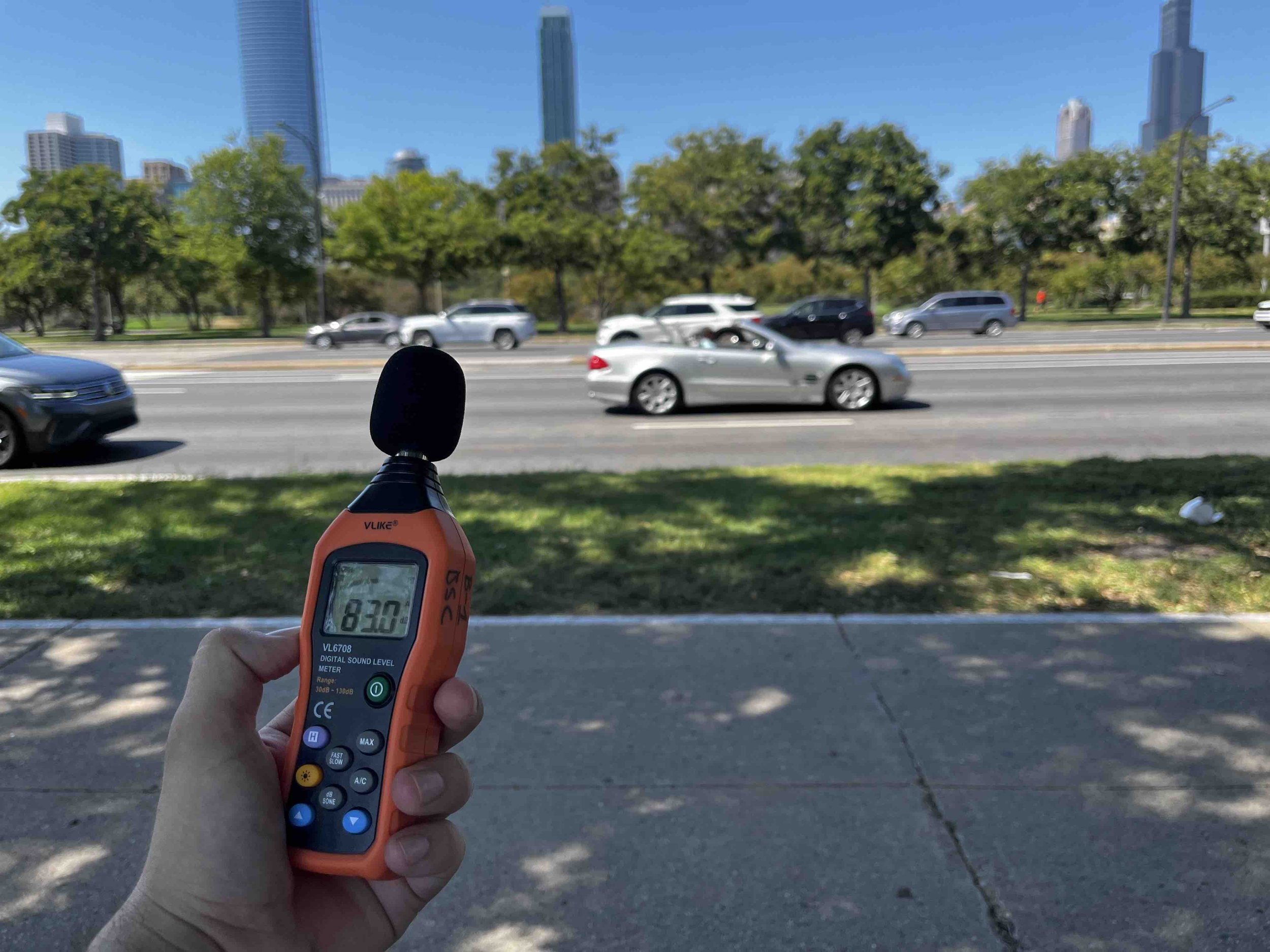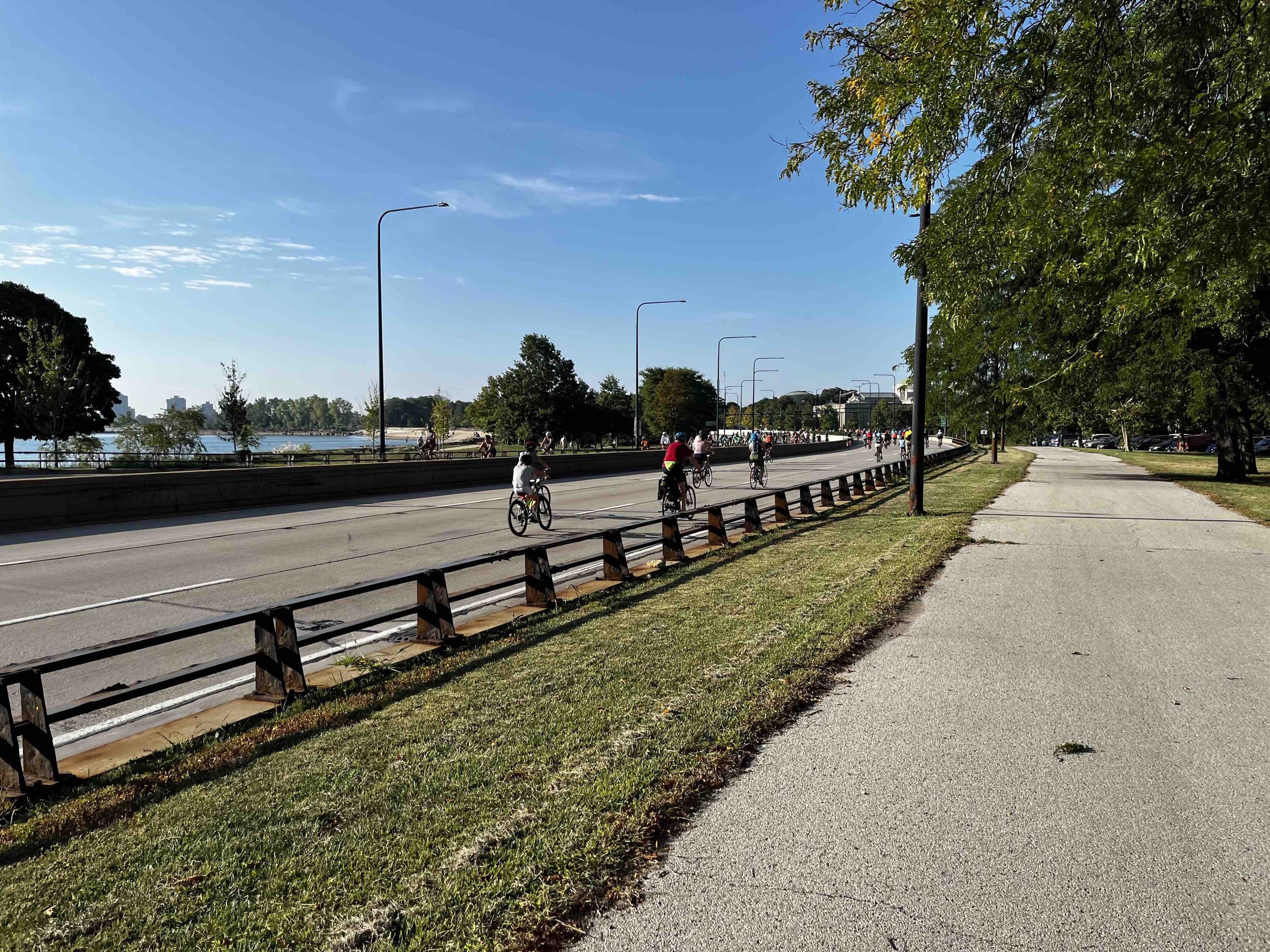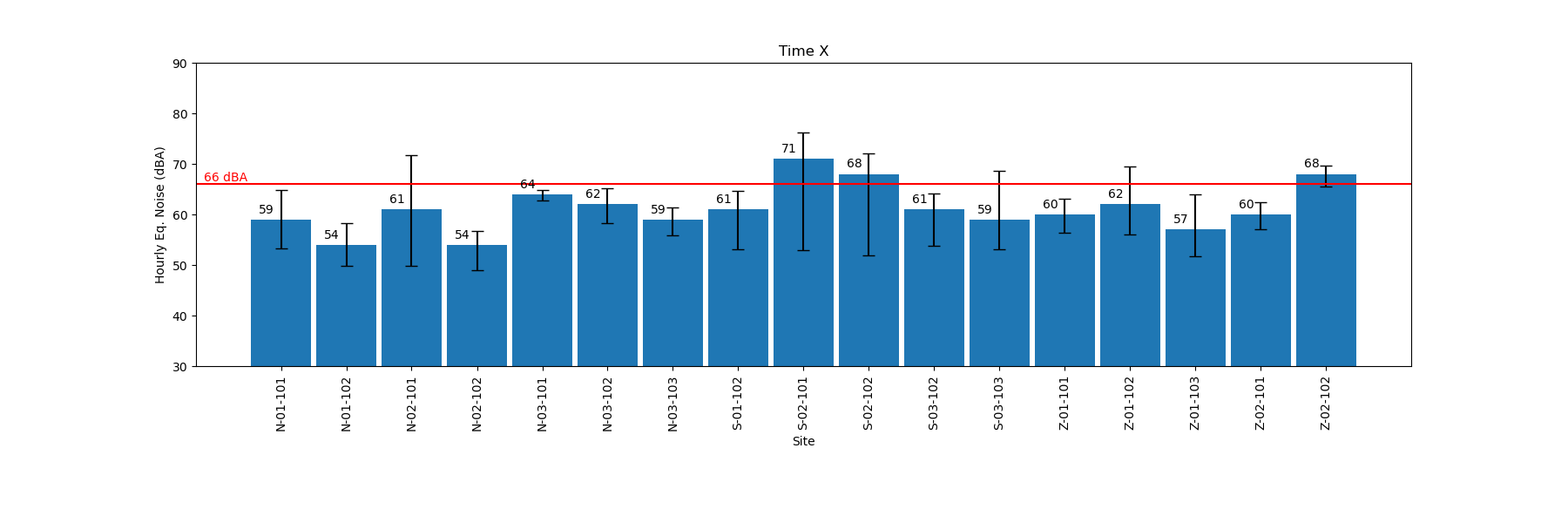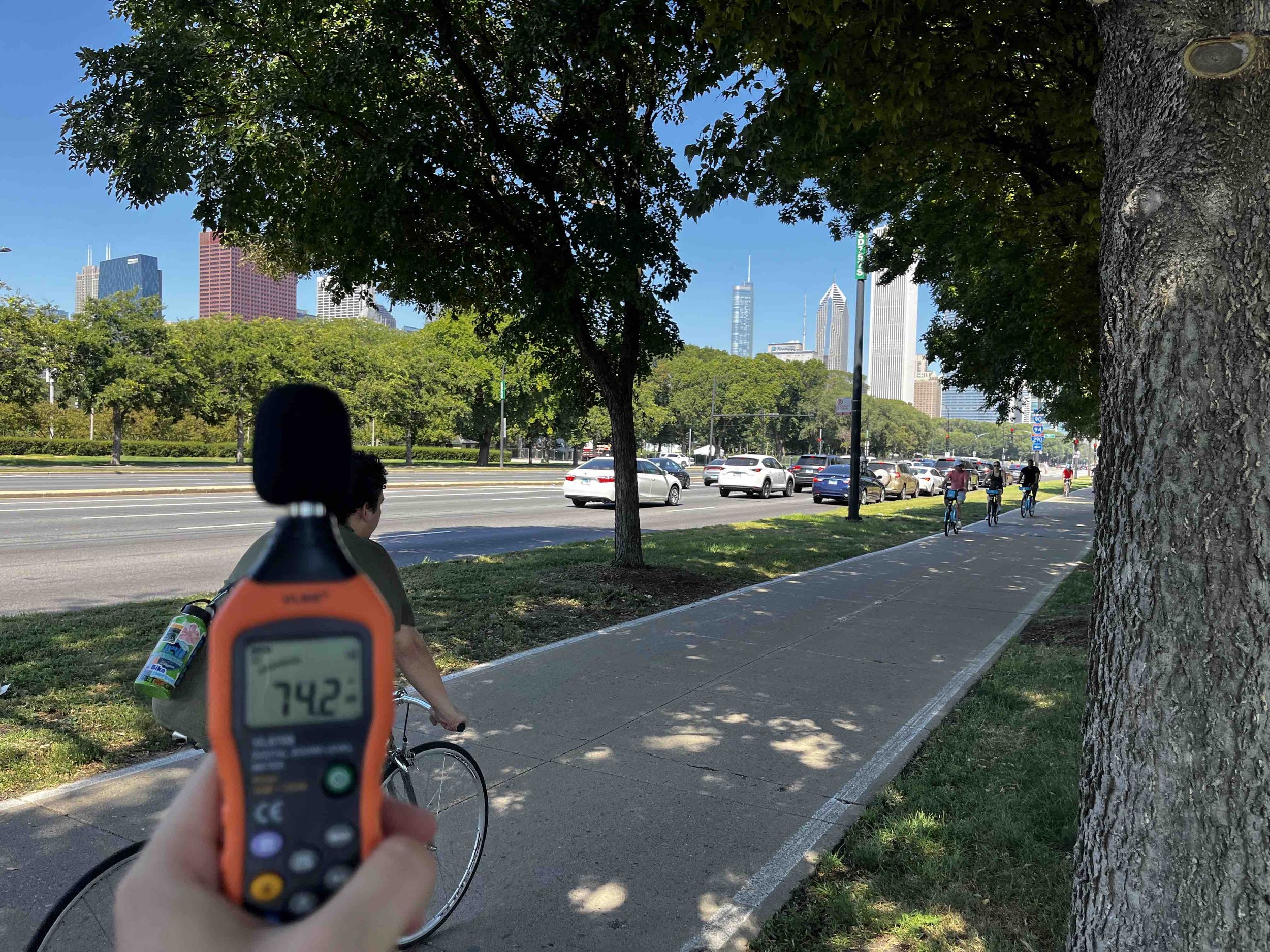
DuSable Lake Shore Drive Noise Study
We conducted a noise study, comparing noise levels at 24 points of the drive at various times, including during “Bike the Drive”.
The drive is loud.
Very loud! Even at great distances from the drive, it is easy to hear the roar of traffic. It often blocks out the enjoyable, dynamic, and surprisingly quiet natural soundscape of the lakefront parks. But we wanted to understand the impact of traffic noise on the park and learn what we’re missing from our everyday park experience. We learned that we’re being robbed of an even better park experience.
Our 2023 DLSD Noise Pollution Study used the power of citizen science to make audio, visual, and decibel records of the ambient soundscape along lakefront during normal conditions (with traffic on DLSD) and during Active Transportation Alliance’s Bike the Drive event – a precious window when the drive is car free. What we found is not only vehicle traffic on DLSD really loud, it’s blocking out an amazing soundscape that exists just below the surface.
Noise During “Bike the Drive“
During Bike the Drive, noise levels were almost always below a noise pollution threshold of 66 dBA.
During Bike the Drive, noise pollution from any source was present only a fifth of the time. Often, ambient noise levels were below 60 dBA, or the equivalent of a quiet room in somebody’s apartment. At all other times though, the ambient noise level exceeds the 66 dBA threshold more than half the time or more reaching levels that replicate non-stop exposure to the noise from a vacuum or landscaping equipment.
Noise During Normal Conditions
At all other times though, the ambient noise level exceeds the 66 dBA threshold more than half the time or more reaching levels that replicate non-stop exposure to the noise from a vacuum or landscaping equipment.
Noise pollution has negative effects on both human and animal health. Exposure to high noise levels, including levels that fall within measured ranges along DLSD, can cause permanent hearing damage. It also impacts people’s physical health in other ways, including from induced stress and anxiety. Noise pollution is solvable, however. Most urban noise pollution comes from traffic noise, and this can be alleviated by slowing vehicle travel speeds and investing in quieter travel modes like walking, rolling, biking, and transit. Quiet and serene urban parks can also help residents escape the stress of life and unwind, with positive knock on effects.
However, noise pollution is solvable.
Most urban noise pollution comes from traffic noise, and this can be alleviated by slowing vehicle travel speeds and investing in quieter travel modes like walking, rolling, biking, and transit. Quiet and serene urban parks can also help residents escape the stress of life and unwind, with positive knock on effects.
